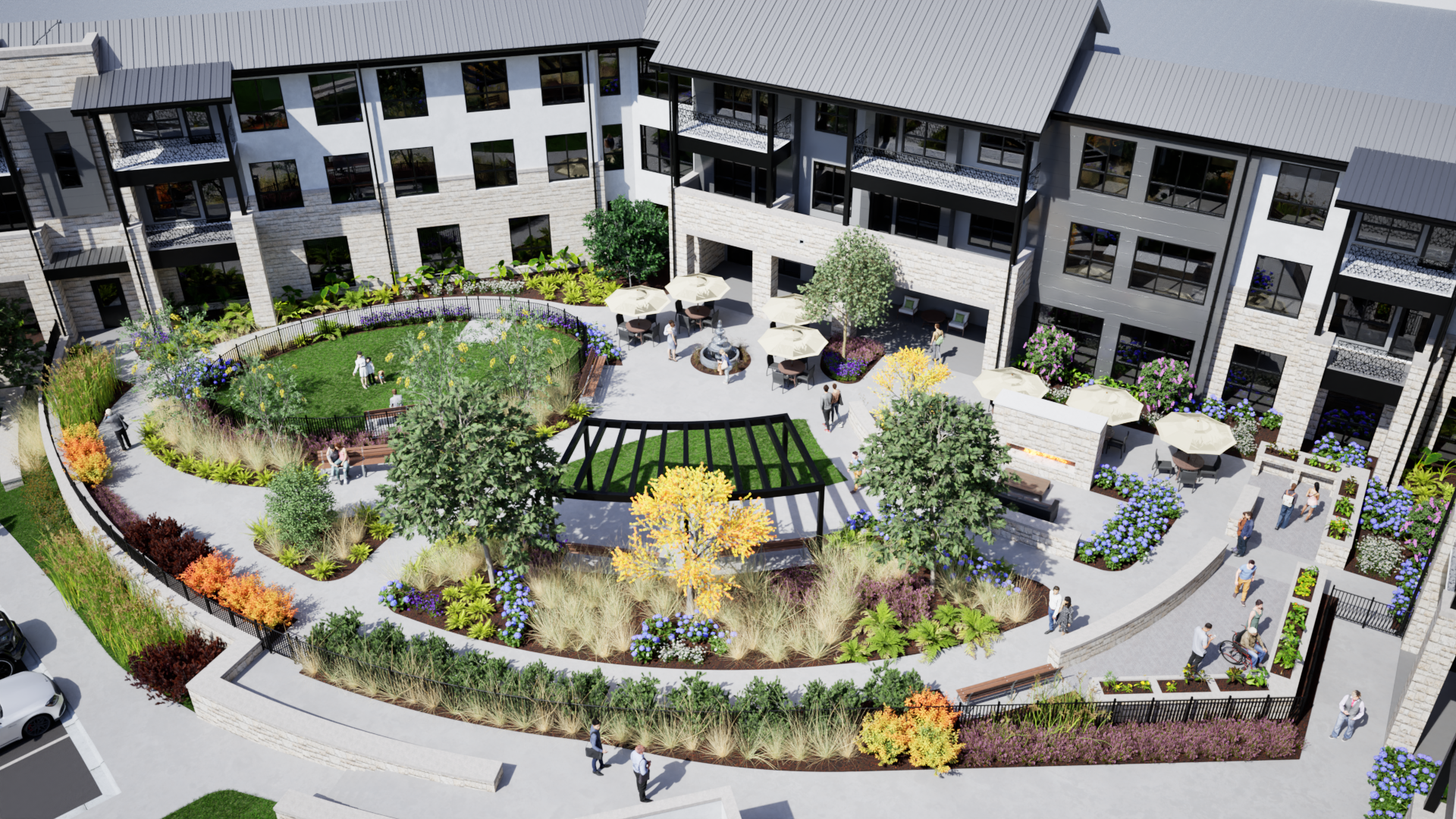Innovative Design Elements and Amenities Attract Active Adults
As Active adult communities continue to gain popularity they require innovative design elements and amenities to appeal to this population of seniors who aren’t ready for a sedentary lifestyle. They need to include an array of amenities that will attract residents who have physical and mental health and wellness as top priorities.
Communities are already looking at how to adapt everything from swimming pools to dining spaces that enable active adults to live and enjoy their quality of life. They are more tech-savvy than previous generations, and they want to be engaged in their communities, however, they also value creativity, family, pets, and work.
For those communities that don’t make changes and adjustments, Colin Milner, CEO of the International Council on Active Aging, suggested, “We will see people leaving because they are looking for safer environments.” At the same time, he cautioned communities shouldn’t just revert to an institutional model in an effort to ensure safety. This means creating safer environments while maintaining warmth, comfort, and engagement.
For instance, a Blue Zones® article from 2021 talked about the concept of “open-air living,” or “friluftsliv.” This can mean a long walk outside, a stroll with the dog, or a drink around a fire pit or an outdoor heated patio or courtyard. Some active adults, particularly those from colder climates, may be undeterred by the cold; so, giving them the option of enjoying the outdoors--even during the winter months--is important. Consider how your outdoor spaces can be utilized in the cold, even when there is snow. Possibilities include covered patios or decks with portable heaters and heated seating, open areas with fireplaces or pits, and paths or trails that can be easily shoveled or plowed.
“Remember, you don’t necessarily need large spaces when considering outdoor spaces to enhance your wellness programs. The key is flexibility in the areas,” said Pi’s Greg Hunteman. “Taking the time to think through the use of the spaces with the most gain for the seven dimensions of wellness may bring you the best outcomes.” He suggested, “Work with an experienced landscape architect to creatively assist you with retrofitting an existing space or take a new development and incorporate a flexible design with more options.”
There are seemingly endless design innovations and amenities for active adult communities that attract residents and fill units, Hunteman noted. These include:
An internet café. This might have individual charging stations and outlets for each table, booth or other types of private spaces, adequate surface space to keep beverages and food safely away from computer keyboards, and a small retail selection of computer supplies such as chargers, power cords, and earbuds.
Multi-purpose rooms for work and entertainment that open into the central gathering space. For example, a removable or folding stage can enable a room to be used for classes, meetings, and performances. Rooms with significant storage space and movable walls/partitions can enable an art studio to double as a classroom or retail venue (such as pop-up shops, art markets, or craft shows). It will be important to consider things like acoustics and soundproofing. For instance, if you have live music in one room, how will that impact adjacent spaces?
Gardening spaces. While individual gardens will still be popular in some markets, many active adults will want to take their green thumbs to the next level. Greenhouses, orchards, large community gardens, and other amenities will enable residents to grow their own fruits, vegetables, and herbs. Consider facilities to enable hydroponics, the technique of growing plants using a water-based nutrient solution instead of soil.
Outdoor entertainment centers. Lounge chairs and umbrellas by the pool won’t do the trick with active adults. They will want amenities like outdoor kitchens, covered lounge areas with TVs and state-of-the-art sound systems, and fans and/or heaters. Temperature-controlled pools that can be used for aerobics, water sports/activities, and therapy also will be popular.
Flexible dining is key. Although active adult communities don’t typically include a commercial kitchen, large dining room accommodations for access to good meals are crucial. This can be as simple as working with local restaurants to bring in pre-arranged meals, providing space for food trucks, or quality grab-and-go options.
Walkable spaces and parking innovations. Active adults want to put on their FitBit or other wearable device and hit the streets for shopping, dining, and errands. This will require access to bikes and ample and convenient parking. When parking is limited Uber or Lyft contracts, shuttle buses or vans, and other ways to make transportation easy and convenient will be appealing. Make sure to integrate adequate charging stations for residents and the inevitable self-driving care revolution.
Family-friendly amenities. Maintaining relationships with friends and family of all ages is a priority for many active adults. This means innovations such as multifamily homes, rooms, or apartments to accommodate visitors; fitness centers that offer memberships beyond senior community residents; kid-friendly areas with things like basketball courts and a bowling alley; and restaurants/coffee shops that are open to the public.
When looking at your next investment or build, consider the current and ongoing trend of active adult communities which appeal to an expanding senior market. Contact us for more ideas and design concepts.
Contact us here or call us at 512-231-1910.









